Letting Your Cat Sleep in Your Bed? An Honest Guide to Getting It Right
I’ve had cats in my life for as long as I can remember, and for most of that time, I’ve also had a furry, purring co-pilot in my bed. It’s a question that always comes up, whether you’re a brand-new cat parent or you’ve had them for years: “Is it really okay to let my cat sleep with me?”
In this article
Honestly, the internet is a mess of conflicting opinions. One article paints it as the ultimate bonding experience, while the next one warns you about sleepless nights and a host of hidden dangers. So what’s the real story?
The truth is, there’s no simple yes or no. The decision is incredibly personal and depends on your health, your cat’s personality, and just your general living situation. My goal here isn’t to tell you what to do. Instead, I want to walk you through what I’ve learned from my own experiences and from talking with vets and behavior experts over the years. We’ll look at why your cat is drawn to your bed in the first place, the real benefits, the honest-to-goodness risks, and the practical steps you can take to make it a safe and cozy experience for both of you.
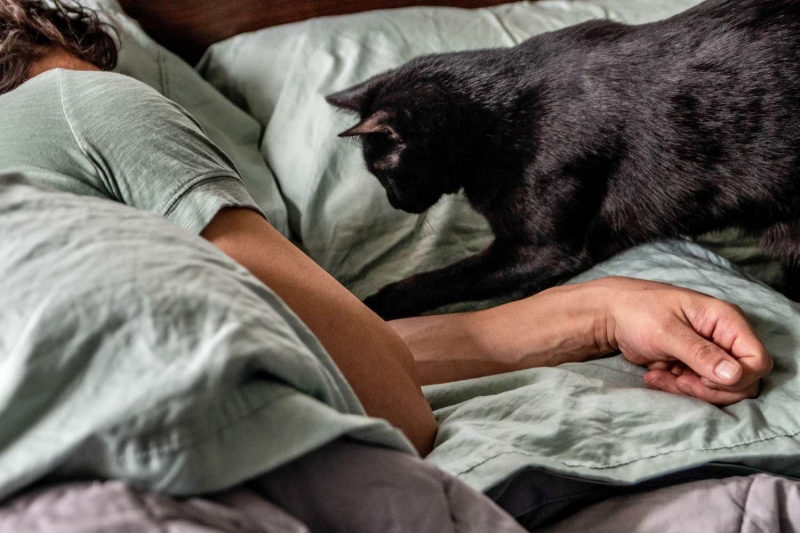
First, Why Does Your Cat Even Want to Sleep With You?
To get to the bottom of this, we have to think like a cat. Their desire to curl up next to you isn’t just a random quirk; it’s wired into their DNA.
Warmth and Security
At its core, it’s about survival. A cat’s body temperature is naturally higher than ours, sitting around 101 to 102.5 degrees Fahrenheit. Keeping that internal furnace running burns calories. By snuggling up to a big, warm radiator (that’s you!), they conserve their own energy. This is especially true for tiny kittens and older cats who have a tougher time regulating their body heat.
Security is the other side of the coin. Out in the wild, sleep is a vulnerable state. By joining a trusted group, a cat feels safer from anything that might go bump in the night. The sound of your steady breathing and your stillness tells them the coast is clear, letting them relax on a much deeper level. You’re basically their nighttime bodyguard.
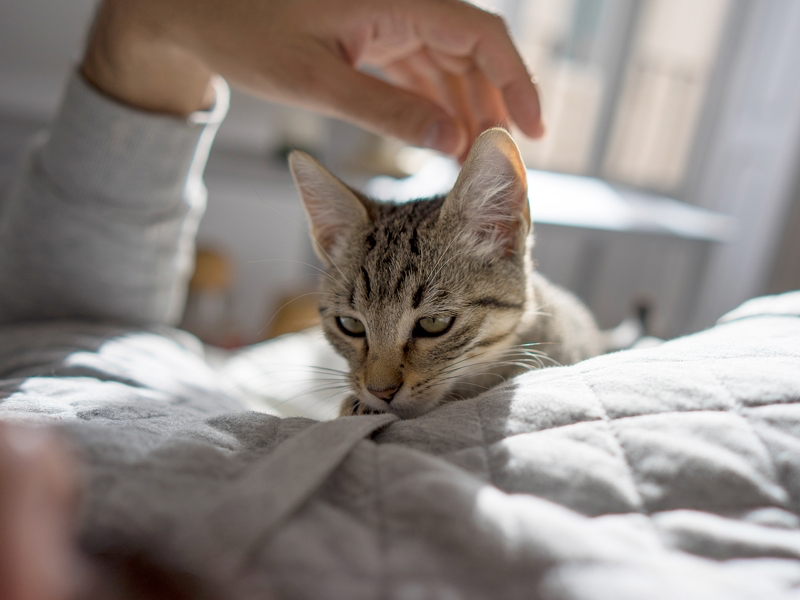
Mismatched Sleep Schedules
So, here’s where the trouble often starts. We humans are generally diurnal, meaning we’re up during the day and (ideally) sleep in one long block at night. Cats? Not so much. They’re what’s known as crepuscular, with their peak activity hitting at dawn and dusk. Their sleep is also polyphasic, which is a fancy way of saying they take a bunch of short naps around the clock.
This is precisely why your cat might suddenly get a case of the “zoomies” at 3 AM. While you’re in your deepest sleep, their internal clock is screaming that it’s prime time to practice hunting… often using your unsuspecting feet as prey. Understanding this biological difference is the first step toward finding a compromise.
The Magic of the Purr
We usually think a purr just means a cat is happy. But it’s way more complex than that. Cats purr when they’re content, sure, but they also purr to self-soothe when they’re scared or in pain. It’s a fascinating coping mechanism.
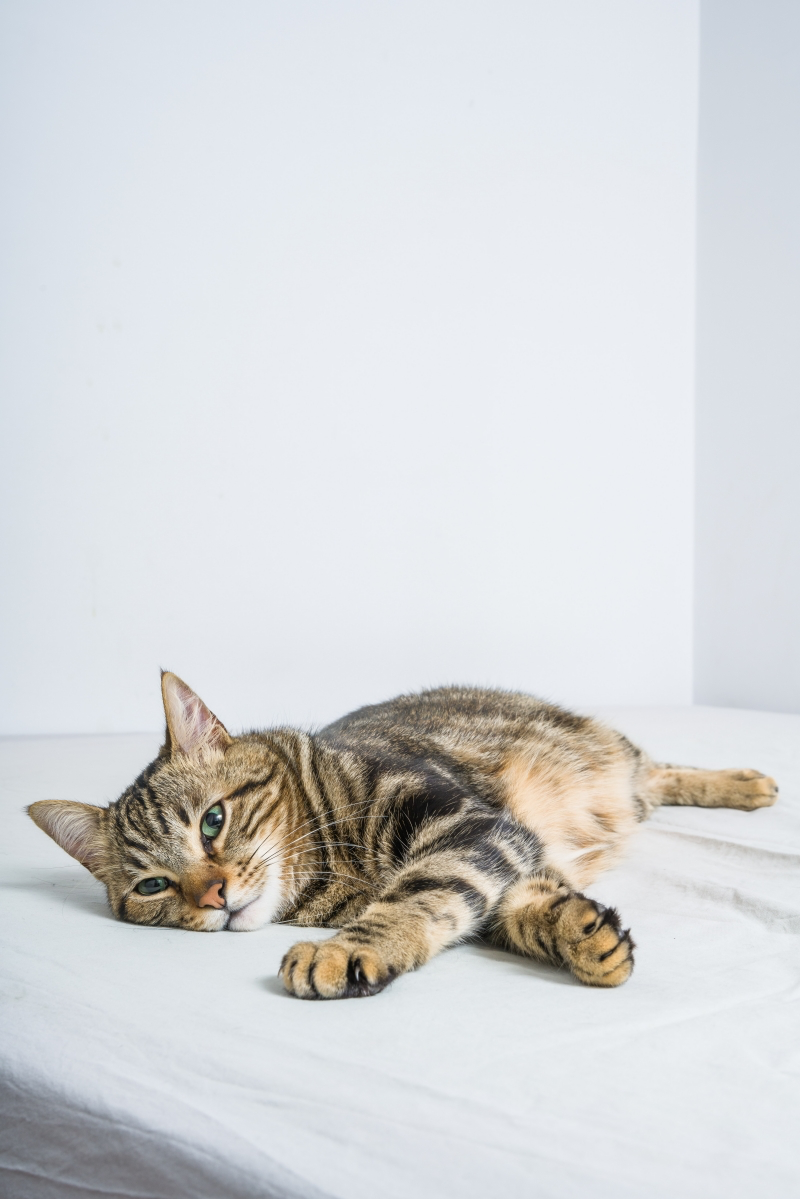
By the way, did you know that the vibration from a cat’s purr falls within a specific frequency range (25-150 Hz)? Some studies have shown that vibrations in this range can actually promote bone density and healing. So when your cat is purring on your chest, it’s not just a nice sound; it’s a physical sensation that many people find incredibly relaxing, helping to lower blood pressure and ease anxiety. It’s basically a tiny, furry therapy machine.
The Upside: More Than Just a Warm Body
When it’s done safely, sharing your bed with your cat can have some pretty amazing benefits that go way beyond a simple cuddle.
Strengthening Your Bond
Trust is everything in your relationship with your cat. Sharing a bed is a huge sign of mutual trust. For a shy or recently adopted cat, being allowed to initiate that closeness on their own terms can be a total game-changer. It’s a quiet way of saying, “I feel completely safe with you.” I’ve seen timid rescue cats completely come out of their shells once they claimed a spot on the bed as their own.
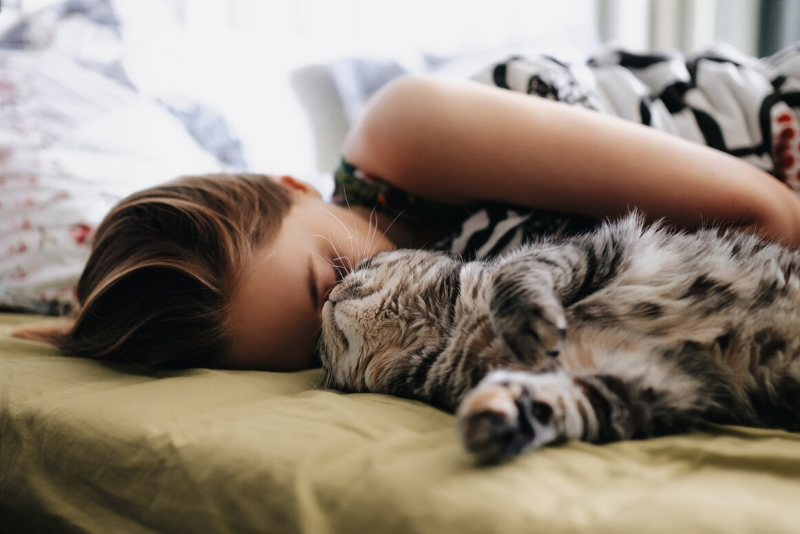
A Natural Stress-Buster
Let’s face it, modern life is stressful. The simple presence of a sleeping cat can be a powerful antidote. Physical contact with an animal is known to release oxytocin, the “love hormone,” which reduces stress and promotes feelings of calm. The gentle weight of a cat on your legs, the soft rhythm of their breathing… it all works together to ground you and pull you out of anxious thoughts, making it easier to drift off to sleep.
Your Unofficial Health Monitor
Here’s a benefit most people don’t think about. Cats are creatures of habit. If your cat has slept soundly on your chest every single night for years and then suddenly stops, they might be trying to tell you something. A change in routine can be one of the earliest signs of a health issue, like arthritis making the jump painful or some other internal discomfort. Paying attention to these subtle shifts could be the thing that prompts an early, and very important, trip to the vet.
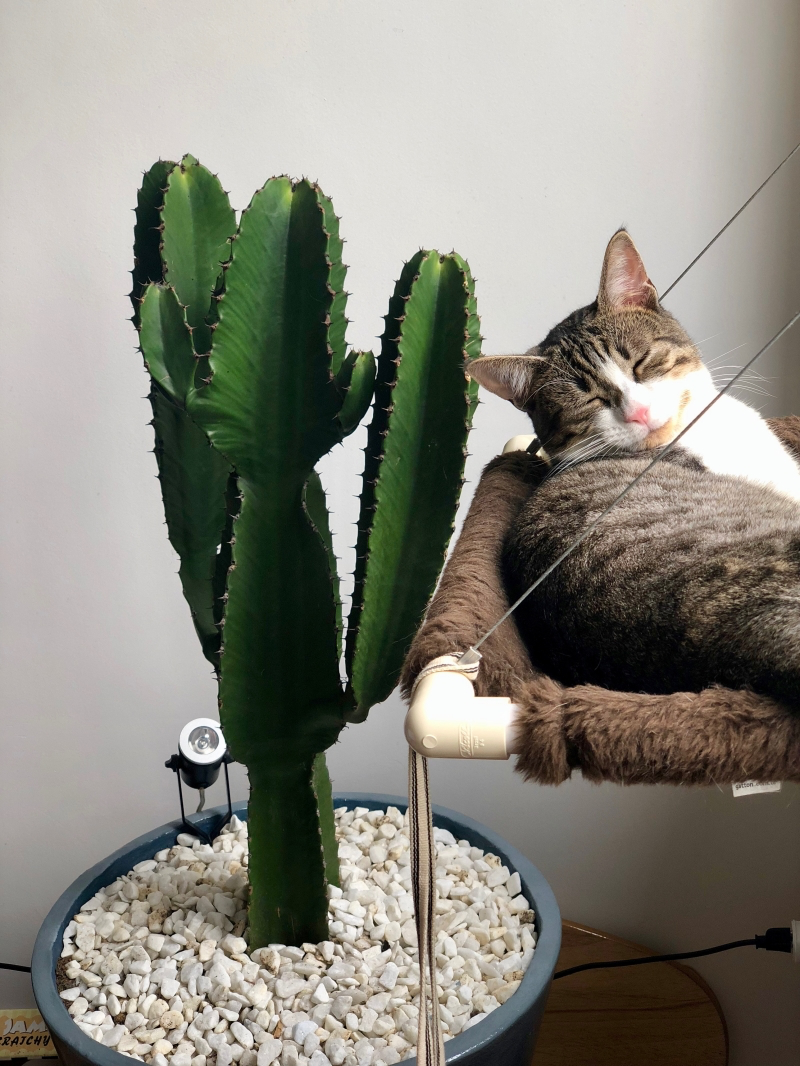
Let’s Be Real: The Downsides and Dangers
Alright, time for some real talk. As wonderful as it can be, co-sleeping isn’t without its potential problems. It’s only fair to lay them all out on the table.
Germs and Parasites (The Real Risk)
This is the big one people worry about—diseases that can pass from animals to humans. The risk is real, but it’s also manageable, and it really depends on your cat’s lifestyle.
- Parasites: Things like fleas, ticks, and intestinal worms are a major concern, especially if your cat goes outside. It’s incredibly easy for them to bring these unwelcome guests into your sheets.
- Bacterial & Fungal Stuff: You might have heard of cat scratch disease, which is a bacterial infection passed through flea droppings (usually via a scratch). Other things like Salmonella can be present in feces, and ringworm (which is a fungus, not a worm) is highly contagious through direct contact.
- Toxoplasmosis: This is a parasite shed in the poop of an infected cat. The risk is from accidentally ingesting the microscopic parasite, not from petting the cat.
Heads up! This is important: For a healthy adult with a strictly indoor cat that gets regular vet care and parasite prevention, the risk of catching anything serious is extremely low. However, that risk changes dramatically for some people. If you are pregnant, trying to become pregnant, or have a compromised immune system (from chemotherapy, an organ transplant, HIV/AIDS, etc.), you absolutely must talk to both your doctor and your veterinarian. In these situations, the risks might outweigh the benefits, and it’s not a decision to take lightly.
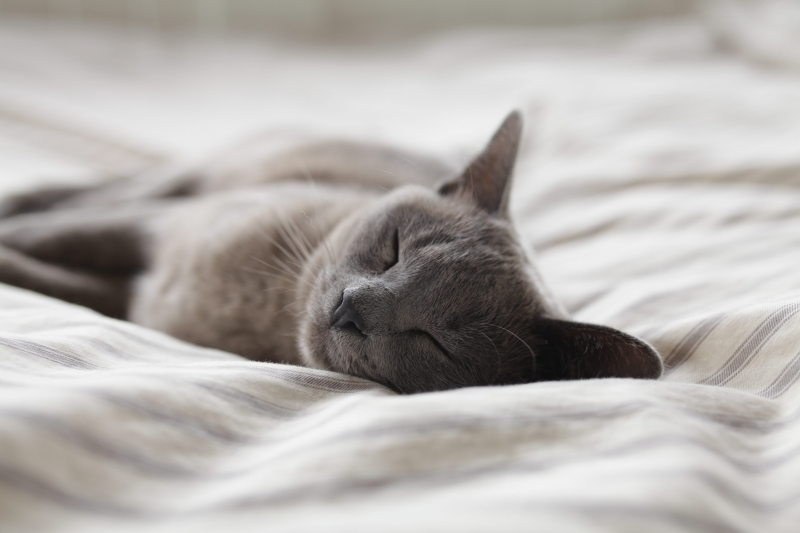
Allergies and Breathing
A lot of people think they’re allergic to cat hair, but the real culprit is a protein called Fel d 1, which is in their saliva and dander (dead skin flakes). When they groom, they cover their fur in it. Sleeping with your cat means you’re in a confined space, breathing in a concentrated dose of these allergens for eight hours straight. This can definitely trigger reactions and, in some cases, even cause allergies to develop over time due to the intense exposure.
The Sleep Stealers
This is probably the most common complaint. Your cat’s internal clock is just not synced with yours, leading to a few classic scenarios:
- The 4 AM Face-Paw: Your cat decides it’s breakfast time and starts tapping your face or knocking things off your nightstand to get your attention.
- Midnight Zoomies: A sudden burst of energy that involves your cat tearing around the bedroom like a maniac.
- Painful Biscuits: Kneading is a sign of contentment, but it can be downright painful when sharp claws are involved.
- Bed Hogging: Some cats decide the bed is their territory and may get grumpy with a partner or another pet who tries to share the space. I once had a friend whose cat would literally push their partner to the very edge of the bed every night!
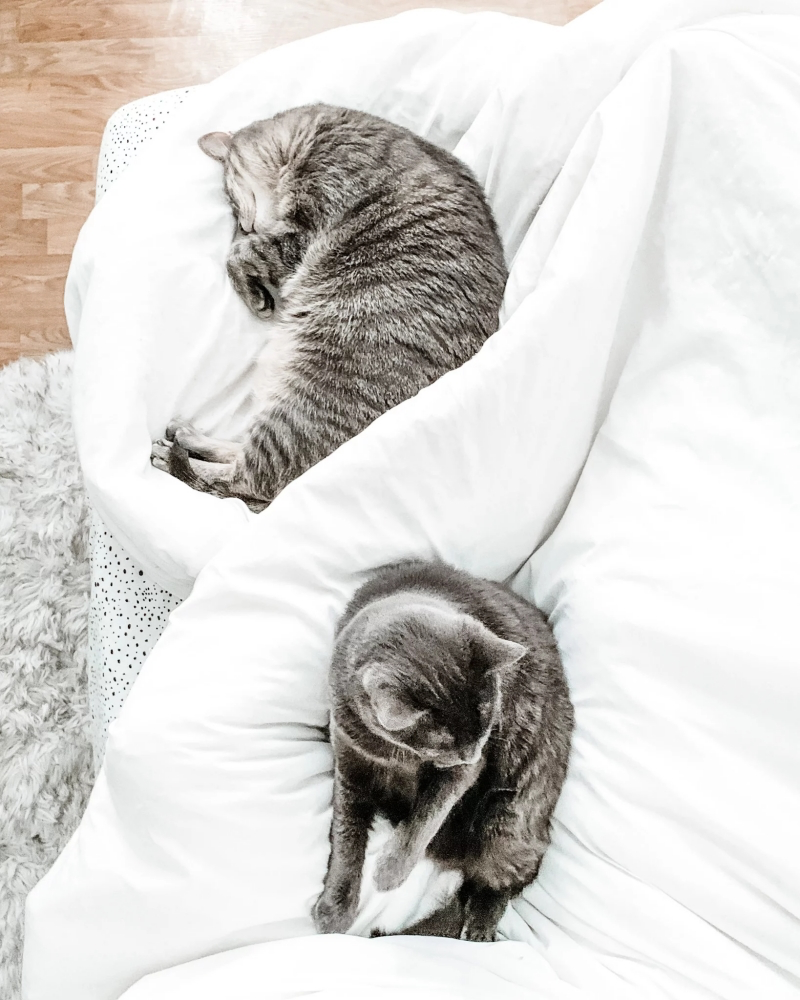
Physical Safety (Non-Negotiable)
Let me be crystal clear: A cat or kitten should NEVER be allowed to sleep with an infant or a very young child. The risk of accidental suffocation is real and not worth it. A cat can unintentionally lie on a baby’s face, or a baby could roll over onto a small kitten. The bedroom door must be kept closed. Period.
Okay, You’re Doing It. Here’s How to Do It Right.
If you’ve weighed the pros and cons and decided to go for it, you have to be responsible. This requires a real commitment to hygiene and setting some ground rules.
The Health and Hygiene Checklist
This is your first line of defense and it’s not optional. Think of it as your co-sleeping starter pack.
- Indoor-Only Is Best: This is the single biggest thing you can do to reduce the risk of your cat bringing in parasites and diseases. An indoor cat is a known quantity; an outdoor cat is a wild card.
- Stay on Top of Vet Care: This means annual check-ups (or twice a year for senior cats) and a year-round parasite prevention plan from your vet. This isn’t the place to skimp; it protects everyone.
- Commit to Cleaning: Wash your bedding at least once a week in hot water to kill dust mites and allergens. But here’s the pro-level stuff you should seriously consider buying:
- An Allergen-Proof Mattress Encasement: This is a game-changer. We’re not talking about a simple mattress pad; this is a full-zip cover that seals your mattress completely, preventing dander from getting in. Don’t cheap out here. Expect to pay between $40 and $80 for a good one you can find at places like Bed Bath & Beyond or online. Get one for your pillows, too.
- A Bedroom HEPA Filter: This is more of an investment, likely running you between $80 and $200, but it’s worth every penny. A true HEPA filter traps tiny particles like cat dander, massively improving the air quality while you sleep.
- Groom Regularly: Brush your cat a few times a week (or daily for long-haired breeds) to get rid of loose fur before it ends up in your bed. A quick wipe-down with pet-safe grooming wipes before bed can also cut down on tracked-in litter dust.
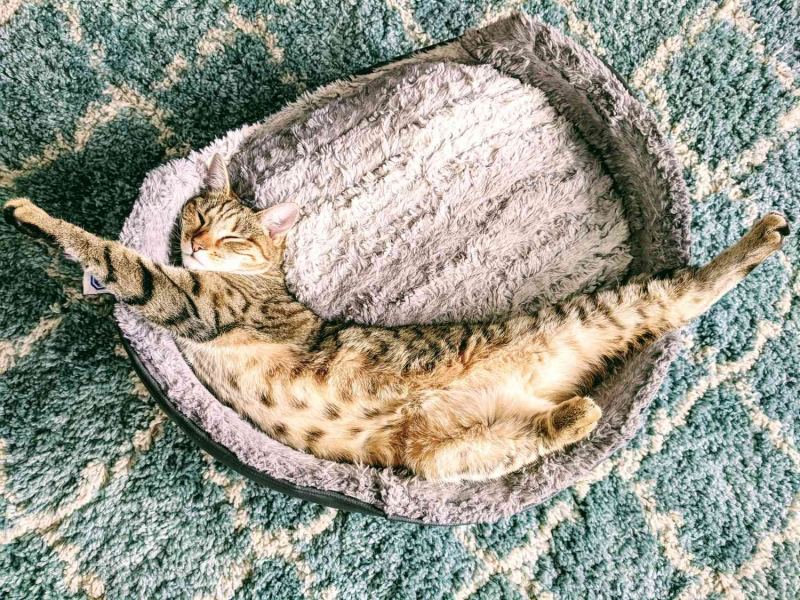
Setting Boundaries Like a Boss
It’s your bed, and your cat is a guest. You get to make the rules.
- Solving the 4 AM Wake-Up: The key is to stop rewarding the behavior. If your cat paws at you and you get up to feed them, you’ve just taught them that pawing works. The solution? First, have an intense play session with a wand toy right before bed to tucker them out. Second, get an automated pet feeder. A reliable one costs around $50 to $90 and is a total lifesaver. Look for one that’s easy to program and hard for a clever cat to break into. Set it to dispense a small meal 15 minutes before their usual wake-up time. They’ll quickly learn to wait by the feeder, not on your face.
- Designate a “Cat Zone”: Don’t want a cat on your pillow? Be consistent. Gently but firmly move them to their own special spot, like a soft blanket at the foot of the bed. Give them praise when they stay there.
- Manage the Kneading: Keep their claws trimmed! If they start kneading on you, gently slide a thick, folded blanket under their paws to protect yourself.
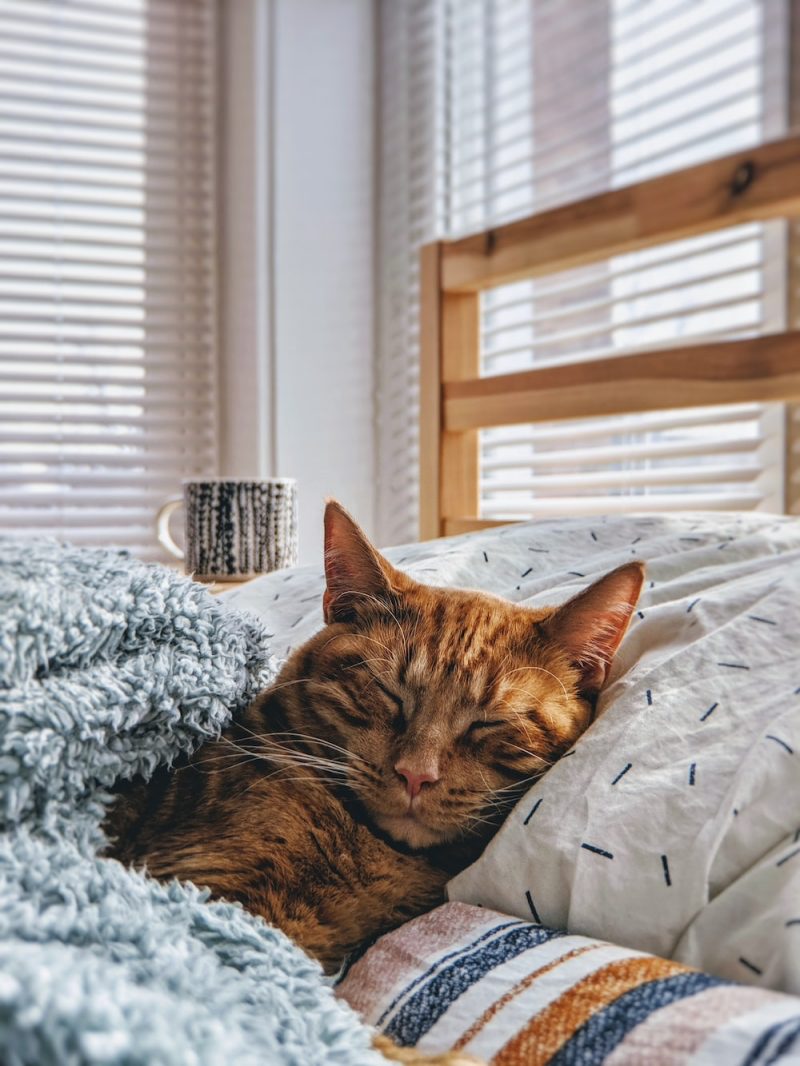
Troubleshooting Common Problems
Life with cats is rarely straightforward. Here’s how to handle a few common snags.
Problem: My cat attacks my feet under the covers!
Quick Fix: That’s just their prey drive kicking in—they can’t help it! The trick is to stop wiggling your toes and redirect that energy. Try giving them a dedicated kicker toy at the foot of the bed before you go to sleep. It gives them something appropriate to “kill” instead of your feet.
Problem: My cat takes up the whole pillow!
Quick Fix: This calls for creating a more appealing alternative. Try placing a small, plush cat bed or even just a super-soft folded blanket right next to your pillow. It gives them their own designated
Inspiration:
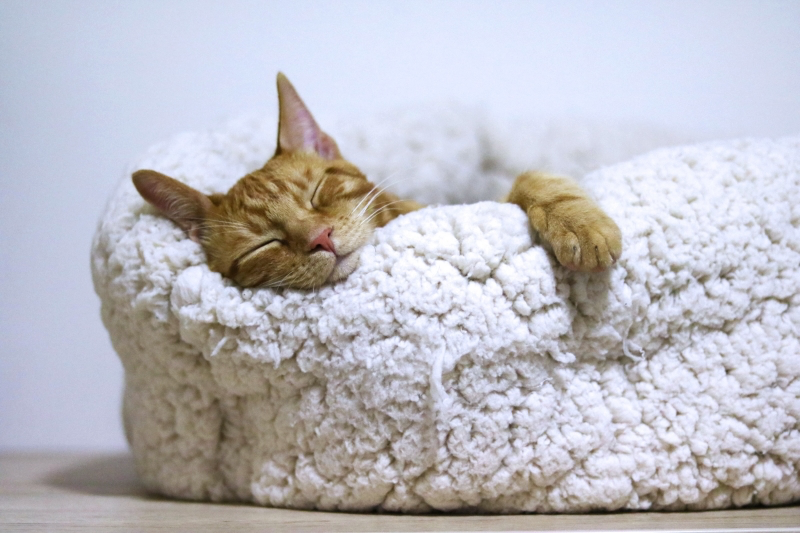
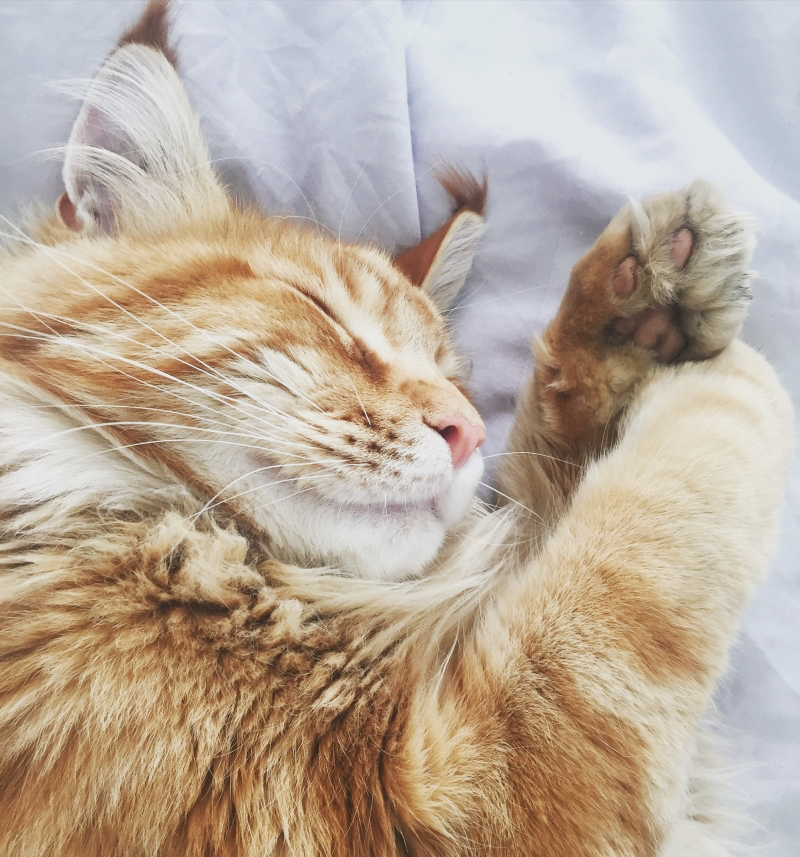
My cat treats 3 a.m. as their personal playground. What am I doing wrong?
You’re not doing anything wrong, you’re just on a different schedule! This is classic feline behavior. The key isn’t to punish the nighttime zoomies, but to preempt them. An hour before you go to bed, initiate an intense 15-minute play session with a wand toy like ‘Da Bird’ to simulate a hunt. Let them catch it, then immediately feed them their final meal of the day. This taps into their natural “hunt, catch, eat, groom, sleep” cycle. They’ll be too satisfied and sleepy to bother you, and you’ll get your uninterrupted rest.
The Allergy Question: Even if you’re not typically allergic, sharing a pillow with a cat can be a challenge. Fel d 1, the primary cat allergen, is found in their saliva and skin, not just their fur. It’s incredibly sticky and lightweight.
To minimize exposure, invest in an allergen-proof mattress and pillow protectors. These create a barrier that dander can’t penetrate. Also, consider making the area near your head a “no-cat zone,” encouraging your pet to sleep by your feet on a separate, easily washable fleece throw instead.










